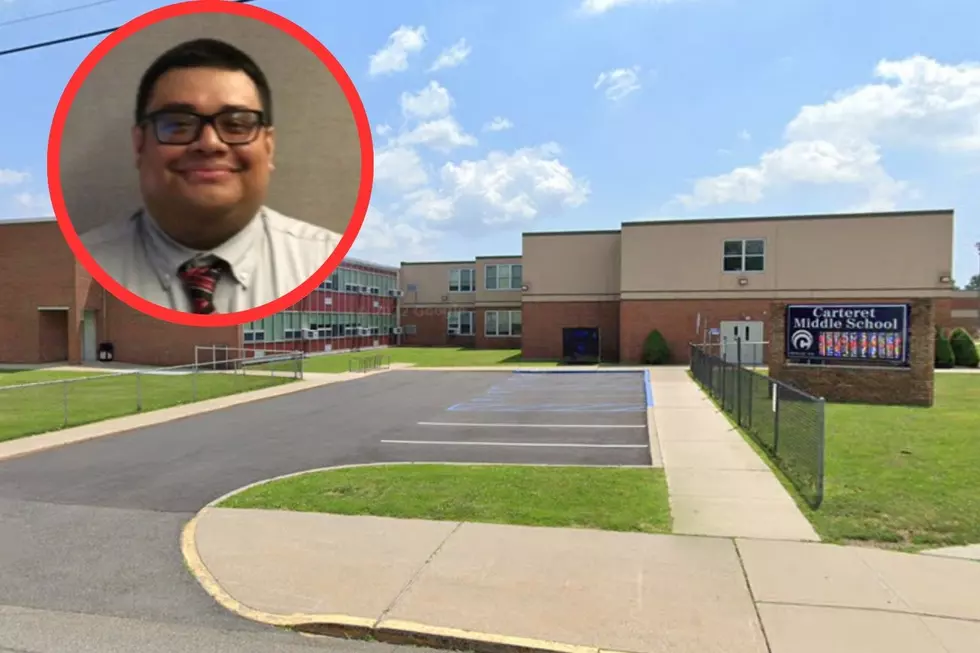
Bald eagles can stay put in northern New Jersey
RIDGEFIELD PARK, N.J. (AP) — The bald eagles of Ridgefield Park appear to be safe from eviction for now.
The Record reports that a federal agency has rejected a developer's contention that the eagles' nest on a contaminated site in the village needed to be removed so that the site, which is slated for a major development, could be capped.
Eagles have used the nest for four years. It sits in a copse of cottonwood trees that grew on an old landfill in a corner of the property.
The developer had argued that capping the landfill — covering the contamination with clean fill — was necessary because the pollutants at the site posed an environmental risk to the eagles. But capping the site would also require cutting down the tree that holds the nest.
The U.S. Fish and Wildlife Service has concluded that the developer's analysis was flawed and that the contamination poses little risk to the eagles.
"The risk doesn't warrant the nest to be cut down," said Steve Mars, a biologist in the agency's New Jersey office. "We're very excited the birds are there. This is the first eagle's nest in the Meadowlands for many centuries. We are trying to ensure they remain there despite the development pressures they're facing."
SkyMark Development Corp. of Paramus has proposed a mixed-use town center on the site that would include residential and retail space, along with a hotel and a conference center, with New York skyline views.
The company has been discussing with regulators how to handle cleanup of the old landfill in a corner of the site. Capping old landfills is required in some cases. The site is bordered by Bergen Turnpike, Route 46 and Overpeck Creek.
While eagles are no longer on the federal endangered species list, they are still protected under federal law.
Ralph Ianuzzi Jr., a managing member of SkyMark, said the developers continue to discuss the issue with federal and state regulators.
"We will continue to do everything we can to accommodate all interests here, including the eagles'," Ianuzzi said. "It's a very difficult task to satisfy all the requirements involved, some of which are statutory, some of which are social and some of which are commercial. We want the eagles to remain in the area and thrive."
At the same time, he said, the company has made a significant investment in the project, which could generate 10,000 permanent jobs.
"We want to construct this project in a useful and friendly way," Ianuzzi said. "This is not an us-versus-them issue. We're not at loggerheads. I'm happy the eagles picked my tree, because I'm going to do the right thing. We are going to act responsibly and prudently."
The Fish and Wildlife decision was welcomed by environmental groups as well as village officials, who have become protective of the eagles even as they hope to see the project proceed.
"The Fish and Wildlife response is very positive, and I hope it will get SkyMark to come back to the table and be more inclined to work with us," said Stephen Quinn, a member of Ridgefield Park's Environmental Commission. "We still need to hash out a final plan and how SkyMark can proceed in a way so that the eagles are not disturbed."
Don Torino, president of Bergen County Audubon, agreed. "This is what we really needed to hear," he said. "We never did think the site was polluted enough to make it an issue to remove the nest."
The state Department of Environmental Protection, which has also been involved in deciding how to proceed at the site, is preparing a response to the Fish and Wildlife letter that should be ready soon, said DEP spokesman Larry Hajna.
The site was once home to the Lincoln Paper Co., which made recycled paper and paperboard and operated between 1954 and 1987. The site's seven buildings were torn down in 2000.
The 6-acre landfill was a disposal area for the mill. It's about 11 feet thick and covered by up to four feet of fill. Soil tests found metals and PCBs, a likely human carcinogen, at concentrations exceeding state soil cleanup standards.
In August, SkyMark's contractor, Langan Engineering, applied for a permit from the Fish and Wildlife Service to remove the eagles' nest, install an alternative nest and remove much of the current nest's buffer and roosting habitat. Removal of an active eagle nest or the vegetation within 660 feet of the nest is regulated by federal law.
SkyMark argued in its permit request that it needed to move the nest because the landfill posed an ecological risk to the eagles.
In a recent response to Langan Engineering, Fish and Wildlife supervisor Eric Schrading wrote that Langan overestimated the risk to the eagles because it assumed the eagles look for food solely at that site, when the typical eagle's foraging range is 4,520 acres, compared to the site's 33 acres. The site, therefore, represents less than 1 percent of the eagles' range.
In addition, the agency noted that the shoreline along Overpeck Creek adjacent to the nest is used as an eagle roost site in the winter. Roost sites are also protected under federal law.
In a letter to Quinn in June, a SkyMark representative said the developer had been in contact with a company that manufactures nest platforms.
Ridgefield Park has been opposed to an artificial nest tower. "The tower would be quite big - 75 to 80 feet tall," Quinn said. "It would be unsightly and would probably be occupied by an osprey rather than the eagles. We want the tree maintained."
Copyright 2014 The Associated Press. All rights reserved. This material may not be published, broadcast, rewritten or redistributed.
More From New Jersey 101.5 FM









